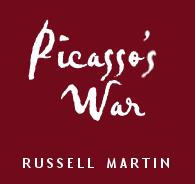|
|
 It was a stunning sight, the kind of scene people in Spain increasingly had begun to encounter, a blend of the old and feared with the wonderfully new. There on the tarmac at Barajas airport on the outskirts of Madrid stood a dozen members of the Guardia Civil
It was a stunning sight, the kind of scene people in Spain increasingly had begun to encounter, a blend of the old and feared with the wonderfully new. There on the tarmac at Barajas airport on the outskirts of Madrid stood a dozen members of the Guardia Civil their eyes scanning for potential trouble, their machine-guns cradled in their palms their eyes scanning for potential trouble, their machine-guns cradled in their palms charged with protecting a painting by Pablo Picasso that only a few years before they would have been bound to destroy. The Iberia Airlines flight had arrived from New York City early on the morning of September 10, 1981, and the Guardia had been waiting to secure the plane as it parked, then to stand watch as the long crate that contained Guernica was off-loaded into an unmarked truck for transport to the Museo del Prado's Casón del Buen Retiro. charged with protecting a painting by Pablo Picasso that only a few years before they would have been bound to destroy. The Iberia Airlines flight had arrived from New York City early on the morning of September 10, 1981, and the Guardia had been waiting to secure the plane as it parked, then to stand watch as the long crate that contained Guernica was off-loaded into an unmarked truck for transport to the Museo del Prado's Casón del Buen Retiro.
 The painting's arrival that morning purportedly remained a carefully guarded secret, yet by the time the truck that carried it reached the small buff-colored building that lay between El Prado and Retiro park, a sizable crowd had gathered, newspaper reporters and television crews were on hand to record the auspicious arrival, and helicopters fluttered overhead. Clearly aware of the significance of the moment, the group of Prado conservators assigned to facilitate the move appeared like pallbearers curiously dressed in white as they slowly and proudly bore the crate from the truck to the large front doors of the building, and as Guernica disappeared inside
The painting's arrival that morning purportedly remained a carefully guarded secret, yet by the time the truck that carried it reached the small buff-colored building that lay between El Prado and Retiro park, a sizable crowd had gathered, newspaper reporters and television crews were on hand to record the auspicious arrival, and helicopters fluttered overhead. Clearly aware of the significance of the moment, the group of Prado conservators assigned to facilitate the move appeared like pallbearers curiously dressed in white as they slowly and proudly bore the crate from the truck to the large front doors of the building, and as Guernica disappeared inside finally at home for the first time since it was created forty-four years before finally at home for the first time since it was created forty-four years before the crowd of onlookers, and even members of the media, burst into loud applause. the crowd of onlookers, and even members of the media, burst into loud applause.
 THE WAR HAS ENDED were the words that headlined the national newspaper El País the following day above a lead story about Guernica's successfully uneventful transfer from the Museum of Modern Art to its new home in Madrid; and the headline bore a remarkably important symbolic truth: nothing in the forty-two years since the civil war's guns were stilled, nothing in the long and terrible reign of Francisco Franco, ever had signaled a deeply shared and satisfying conclusion of hostilities in the way this single painting's repatriation to Spain had done, its complex and profoundly disturbing images of horror at last a perfect symbol of peace.
THE WAR HAS ENDED were the words that headlined the national newspaper El País the following day above a lead story about Guernica's successfully uneventful transfer from the Museum of Modern Art to its new home in Madrid; and the headline bore a remarkably important symbolic truth: nothing in the forty-two years since the civil war's guns were stilled, nothing in the long and terrible reign of Francisco Franco, ever had signaled a deeply shared and satisfying conclusion of hostilities in the way this single painting's repatriation to Spain had done, its complex and profoundly disturbing images of horror at last a perfect symbol of peace.
Excerpted from Picasso's War by Russell Martin, Copyright© 2002 by Russell Martin.
Excerpted by permission of Dutton, a division of Penguin Putnam, Inc.
All rights reserved. No part of this excerpt may be reproduced or reprinted without permission in writing from the publisher.
|
|
 |
| |

|
|






